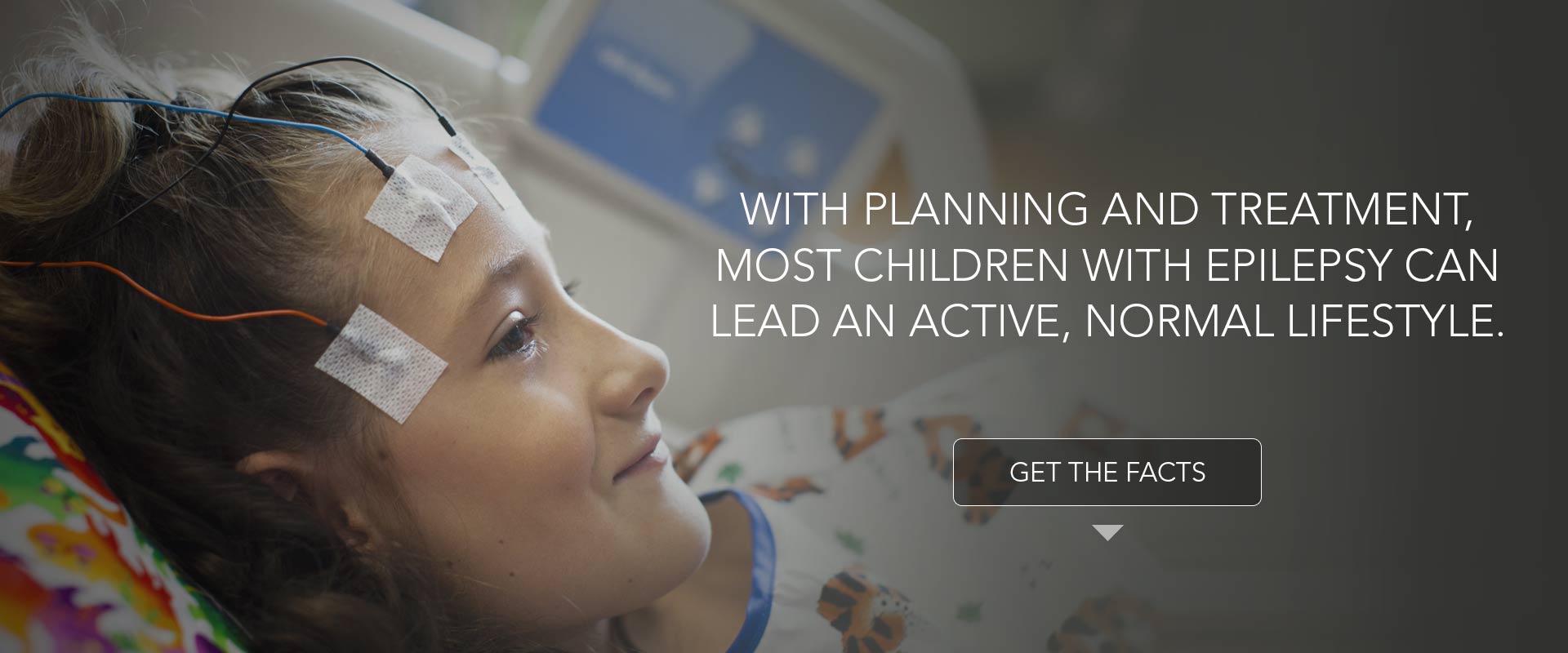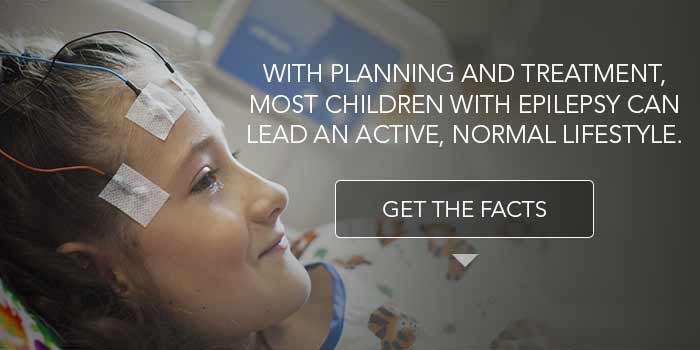Home » Articles » Facts About Epilepsy: Symptoms and Treatments
Facts About Epilepsy: Symptoms and Treatments
- Very few children who have a seizure will develop severe epilepsy; less than half of them will have a second seizure.
- If a child has two or more seizures, they are considered to have epilepsy.
- With planning and treatment, most children with epilepsy can lead an active, normal lifestyle.
- There are many different types of seizures and not all of them include shaking. With some seizures, a child may experience a strange feeling or changes in smell, vision or hearing. With other types, a child may be awake but staring absently. Certain kinds of seizures may go unnoticed or may be mistaken for something else.
- The goal of epilepsy treatment is to completely control the seizures using the smallest amount of medicine possible, allowing a child to grow and develop normally.
- If medications do not control a child’s seizures, epilepsy surgery should be considered. In many cases, allowing seizures to continue uncontrolled is much riskier than having surgery.
- While brain surgery seems scary, it is important to know that children are very resilient. The plasticity of a young brain allows it to adapt to changes and heal more easily than an adult brain.
- Alternative treatments for epilepsy are effective for some children. These include implantation of a vagus nerve stimulator (similar to a Pacemaker) and the ketogenic diet.
- For some children, epilepsy disappears with age.















